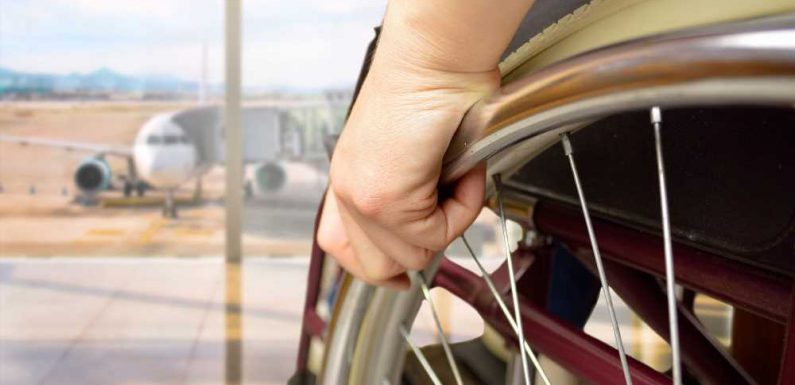
DOT secretary Pete Buttigieg has pledged to work toward requiring airlines to allow passengers to stay in their personal wheelchairs when they fly.
“We know that this won’t happen overnight, but it is a goal that we have to work to fulfill,” Buttigieg said in a YouTube video posted last week by the advocacy group Paralyzed Veterans of America.
In contrast to the requirements imposed on bus lines and trains, the American with Disabilities Act doesn’t require airlines to make it possible for passengers to travel in their personal wheelchairs. Instead, flyers are typically transferred from their own chair in the boarding area into a narrow, airline-owned chair. Once aboard the plane, they are transferred from that chair into the standard airline seat.
A National Academy of Sciences (NAS) report delivered last fall at the behest of Congress concluded that personal wheelchair securement is technically feasible on commercial narrowbody aircraft such as Boeing 737s and Airbus A320s, provided that two successive rows of seats are removed on one side of the aisle.
- Related: Airline can secure personal wheelchairs in the cabin. Will they?
The study stated that many wheelchairs comply with the horizontal crash standards used by the FAA for existing aircraft seats, though further testing must be done to determine whether chairs meet FAA standards for vertical impact.
The report did not explore the financial impact to airlines of removing two rows of seats and replacing them with one row for wheelchair access. Costs, though, could be substantial — potentially totaling $1 million per plane or more, even assuming all the wheelchair slots were purchased and that the seats removed were economy class.
The NAS study said the best place to create the wheelchair space would be in the two front left rows behind the door — an area often used by carriers for pricier first class seats.
In a statement, Airlines for America (A4A) said that airlines are committed to providing a positive and safe experience for travelers with mobility aids.
“A4A carriers have long been engaged in a variety of initiatives to increase air travel accessibility,” the trade group said. “We look forward to continuing to work with the disability community, aircraft and mobility aid manufacturers and safety regulators to explore safe and feasible solutions that reduce barriers to air travel.”
In his statement, Buttigieg referenced an incident relayed to him by Marine Corps veteran Charles Brown, who is the president of Paralyzed Veterans of America. Brown, Buttigieg said, was once dropped by an airline employee onto a jet bridge, breaking his tail bone and causing a near-fatal infection.
“Practically everyone who uses an airline and flies, including colleagues of mine here at the DOT, has a troubling story about an airline experience. Many have far more than one,” Buttigieg said.
Source: Read Full Article









